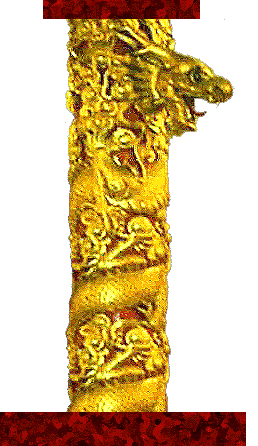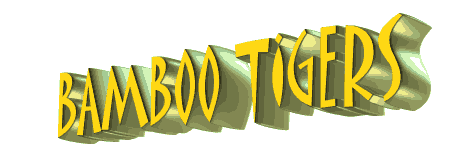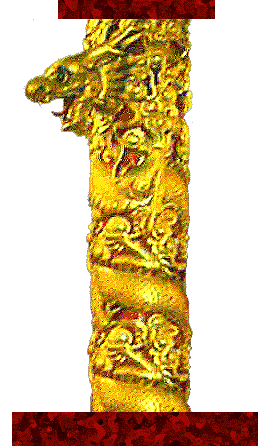| |
Bamboo Tigers was written in the mid-1980s and has never been published. Its appearance here represents the author's private sharing of it with friends. Although in some ways the book now serves as a historical document, in others it is as timely as today. The intervening years may have witnessed spectacular changes in the political and social circumstances of San Francisco, East Asia and the world at large, but criminals and lawmen only wear new faces. Plus ça change, plus c'est la même chose. The French express that truism better than anyone else--"The more it changes, the more it stays the same." Voltaire phrased it, "History never repeats itself; man always does."
Bamboo Tigers could not have been written without the dedicated efforts of four individuals who figure prominently in its pages. All are recognized authorities on Chinese youth gangs. Inspectors John E. McKenna, Daniel J. Foley (who is now, in 2000, the chief of San Francisco's Asian Gang Task Force) and Timothy L. Simmons, members of the San Francisco Police Department's Gang Task Force, were deeply involved in the investigation of the Golden Dragon massacre, as was Hugh Anthony Levine, erstwhile Assistant District Attorney of San Francisco, who successfully prosecuted its perpetrators.
Bamboo Tigers is a detailed account of tracking down the perpetrators of the Golden Dragon massacre in San Francisco's Chinatown on September 4, 1977, and bringing them to justice. It is based on facts supported by court testimony, transcripts of audio and video tapes or the original tapes themselves, newspaper accounts and other published material, police reports used in court proceedings (thus in the public domain), and interviews with participants including police officers, eyewitnesses, victims, and gang members present and past.
Dialogue generally derives from direct evidence, and frequently represents actual wording. Physical movements or actions, when known, are reported on the same basis, and although the author has in some instances taken license to dramatize a reconstructed event, efforts have been made to do so within the realm of acceptable probability. In those few instances where direct evidence is not available--as in unrecorded conversations among gang members--conclusions relative to content, manner of speech and behavior are drawn either from knowledgeable sources or by combining the separate testimonies of participants in trials, hearings or formal statements relative to the Golden Dragon massacre and other cases.
The author has tried to ascribe no motivations or actions to any characters which might stand unproved by later events or which have not led, in direct or cross-examination, to the conviction of perpetrators. A work of non-fiction purports to tell the "truth" about what has taken place in a given circumstance or situation, but it is always the truth as one person or a group of persons interprets it. The information presented in this book has been researched on the basis of "truth" recorded in the courts of law or history. As has been illustrated often in the 20th century, judgments in both courts can be rewritten overnight.
To avoid confusion, a general rule has been followed relative to Chinese names, primarily those of young people. They are either given in full, or, after introduction by full name, only first names are used. There are, traditionally, but one hundred Chinese surnames--lao pei hsing ("hs" pronounced always as "sh"), the "Old Hundred Names." Census-takers in China have a frustrating task. An enormous community such as San Francisco's Chinatown boasts unlimited duplication and alternate spellings of Fong, Louie, Kwan, Chang, etc. For ease of identification, "street" names, i.e., nicknames like "Hotdog," "Egg" and "Disco Duck" are frequently employed in this book instead of proper names.
Gang names are given as they are most frequently used by police in San Francisco--some in Chinese, some in English. A few gangs, however, which began with a Chinese name, have evolved an English one. Even so, many gang members refuse to recognize it. A classic case involves the boy asked in court, during crucial testimony, if he were a "Joe Boy" (which he was, to police), but he replied in the negative until finally asked if he were a "Chung Ching Yee" (which he was, in his native Cantonese).
In recognition of a uniquely Chinese-American institution, the word "Tong" has been capitalized throughout this work, although that is not standard practice in most published material. As defined in Webster's New World Dictionary of the American Language, a Tong is, "in the U.S., a secret, fraternal society of Chinese." It derives from Chinese t'ang, a "hall" or "meeting place."
In addition, with regard to the use of Chinese names, and words, only those which require translation for clarity or emphasis are set apart in italics. The so-called old spelling (usually based on the system developed by the late Sir Thomas Wade) is employed not only because it is more familiar to Western eyes, but also because it is, frankly, easier for most people to pronounce without reference to instructions--as in new "Qin," for old "Ch'in," and new "Xinjiang," for old "Sinkiang."
There are a couple of exceptions. The new, or Pinyin, spelling currently preferred by Peking ("Beijing," in Pinyin spelling) is used to identify the late Chairman Mao Zedong ("Mao Tse-tung," in old spelling), as this form has achieved wide currency in English. "Beijing" is also used here.
Pinyin spelling, once mastered, is surely the closest any system has come to enabling English-speaking people to correctly approximate Chinese sounds. The author must report, however, that there is another reason the old spelling has been retained in this book. It is embodied in an observation made to him by a knowledgeable Chinese lady from Shanghai, who has lived in San Francisco and now travels between Red China and Japan: "Knowing modern China as I do, I have come to the conclusion that when most American Chinese think of our mutual mother country, they think in terms of a nation and a culture that existed fifty or a hundred years ago. That China does not exist today, except in the minds of the Overseas Chinese." Her opinion is shared by many, including the government in Beijing.
For this reason, it is believed, Beijing has made tremendous efforts to inspire hundreds of thousands of Overseas Chinese--from many nations--to visit the mother country and see firsthand the changes which have taken place. For this reason, also, the author adheres to the old spelling, in recognition of a distinct cultural and time lapse between the Chinese in the United States and the Chinese in China. This lapse is a natural consequence of the immigrant's evolution, in which he or she ultimately becomes, and must ultimately be accepted as, an American among Americans.
| |
|









